Nearly a year after a concerted humanitarian effort staved off a famine in South Sudan, the country is once again teetering on the brink of another catastrophic food crisis, the United Nations warns.
Almost two-thirds of the population will need food aid this year to stave off starvation and malnutrition as aid groups prepare for the “toughest year on record”, according to the estimates of a working group that includes South Sudanese and UN officials.
“The situation is extremely fragile, and we are close to seeing another famine. The projections are stark,” Serge Tissot, the Food and Agriculture Organization’s (FAO) Representative in South Sudan, warned reporters last week.
FAO, the UN Children’s Fund (UNICEF) and the UN World Food Programme (WFP) warn that any progress in preventing hunger-related deaths made so far could be undone, and more people than ever could be pushed into severe hunger and famine-like conditions during May-July unless assistance and access are maintained.
- People of South Sudan still need our help: UNICEF
- South Sudan famine averted but millions still face hunger
Particularly at risk are 155,000 people, including 29,000 children, who could suffer from the most extreme levels of hunger.
Legacy of war
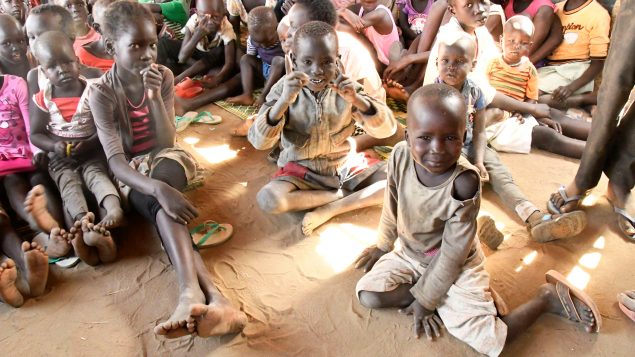
Children sit on the floor inside a classroom in Konyokonyo camp for the internally displaced people in Juba, South Sudan January 31, 2018. (Samir Bol/REUTERS)
Ross Smith, 41, head of programs for the WFP in South Sudan, said the country’s ongoing civil war is chiefly to blame.
“Over the past more than three years we had conflict spread throughout the country, affecting virtually all parts of the country,” said Smith, a Canadian who has been in South Sudan for nearly two years.
(click to listen to the interview with Smith Ross)
ListenThe conflict has forced 2 million people to flee South Sudan to neighbouring countries, while at least another 2 million have been displaced inside the country.
The civil war has also caused widespread food insecurity in South Sudan. Over 5.3 million people, almost half of the country’s population, are already facing severe food insecurity according to the WFP estimates.
“Food insecurity means that they don’t have enough to eat on the daily basis for a household, especially for kids in a household,” Smith said in a phone interview from Juba. “People end up skipping meals or reducing the size of meals, they change the foods that they eat, often simplifying the diet to they’ll often eat one type of cereal, for example, like sorghum or maize.”
This kind of a diet is especially harmful for children, he said.
“A well-balanced diet and frequent meals are very important for growth and development in children,” Smith said. “And here you have kids eating sometimes once a day, sometimes once every two days.”
This can severely impair the growth and development of children and it causes both short-term and chronic malnutrition in children, Smith said.
The most dangerous country to be an aid worker
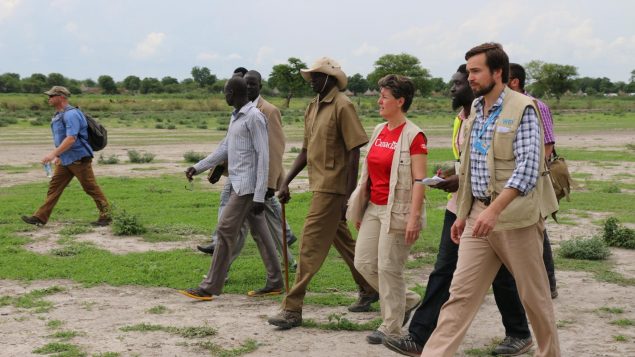
Minister of International Development and La Francophonie, Marie Bibeau visited WFP’s Rapid Response food distribution sites in Jonglei State, in South Sudan June, 2017 accompanied by WFP’s Head of Programme, Ross Smith. (Sabine Starke/WFP)
South Sudan is considered the world’s most dangerous place to be an aid worker, with at least 95 killed since the conflict began.
The United Nations says violence against aid workers in South Sudan reached a new high in 2017, with 28 killed.
Nearly half of the 1,159 humanitarian access incidents reported last year by aid agencies involved violence including killing, looting and threats.
“For myself, I live in the capital city, in Juba, and we have a range of security precautions, we have curfews and various things, but it is really our staff and partner staff that are out on the front lines in the bush that face the most danger,” Smith said.
Negotiating with various factions
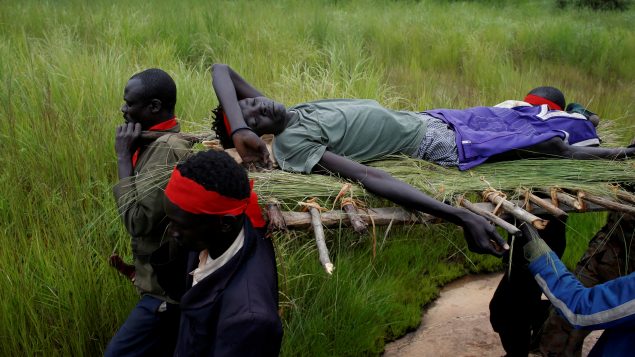
SPLA-IO (SPLA-In Opposition) rebels carry an injured rebel after an assault on government SPLA (Sudan People’s Liberation Army) soldiers, on the road between Kaya and Yondu, South Sudan, August 26, 2017. (Goran Tomasevic/File photo/REUTERS)
The civil conflict in South Sudan has pitted forces loyal to President Salva Kiir, an ethnic Dinka – the country’s largest group, and his sacked deputy Riek Machar, who is from the second largest community, the Nuer.
What started as a power struggle within the governing SPLM party has turned into an ugly civil war and inter-ethnic conflict. The nature of the conflict creates particular challenges for aid agencies, Smith said.
“There are numerous splinter groups and opposition forces and government forces throughout the country, so there are numerous front lines, conflict lines and conflict zones in the country and they are consistently changing,” Smith said.
Aid agencies are able access the various parts of the county through “access negotiations” with various local players, he said.
“We have a team of staff here that spend all of their time doing access negotiations,” Smith said. “We have basically a large contact list of stakeholders in the country and we’re constantly engaging with them to get assurances for accessing these populations and safety and security of our staff in doing so.”
Humanitarian lifeline for a failed state
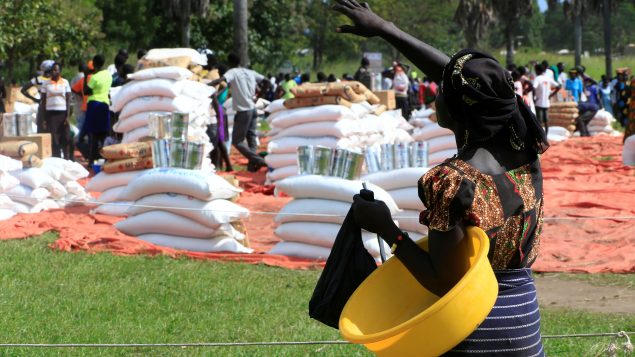
A refugee woman from South Sudan gestures as she waits to receive food from the World Food Program (WFP) in Palorinya settlement in Moyo district northern Uganda October 26, 2017. (James Akena/REUTERS)
The world’s youngest nation has spent much of its history in conflict and has been unable to provide for its citizens despite its rich oil and mineral deposits.
In fact South Sudan is entirely dependent on international assistance.
“In 2017, the humanitarian response budget was three times the national budget of the country,” Smith said.
“So that gives you a good sense of the scale of the humanitarian assistance and the severity of the situation in the country.”
Canada is one of the key donors and over the past five years has provided almost $150 million worth of assistance to South Sudan.
More than just a band-aid solution
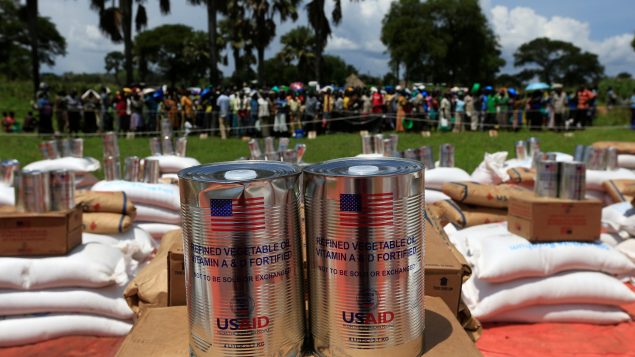
Refugees from South Sudan queue as they wait to receive food from the World Food Program (WFP) in Palorinya settlement in Moyo district northern Uganda October 26, 2017. (James Akena/REUTERS)
The WFP provides a range of assistance packages to vulnerable populations, Smith said.
“At least 75 per cent of what we do in the country is emergency relief assistance,” he said. “In areas that are severely food insecure a package of food commodities and nutrition support, so this looks like basic cereals and pulses – things like beans, lentils – and fortified oil, and we also provide specialized nutrition products especially for young kids.”
The WFT relies on a large fleet of aircraft to deliver its humanitarian assistance to remote communities and the camps for the internally displaced people, Smith said.
The UN food agency also has programs to help people recover from conflict and build their livelihoods, he said.
“The only solution here is a political solution, there is no technical fix and there is no way that increasing amounts of humanitarian assistance can do anything more than just save people’s lives,” Smith said.
“And that’s what we’re doing right now. But to rebuild the country and to rebuild the economy of the country we need political stability and so we need peace.”
With files from The Associated Press and Reuters
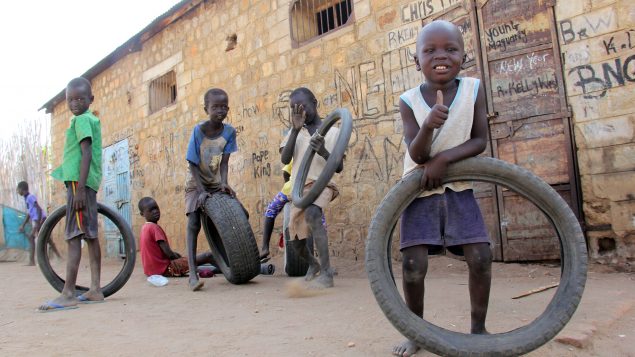







For reasons beyond our control, and for an undetermined period of time, our comment section is now closed. However, our social networks remain open to your contributions.